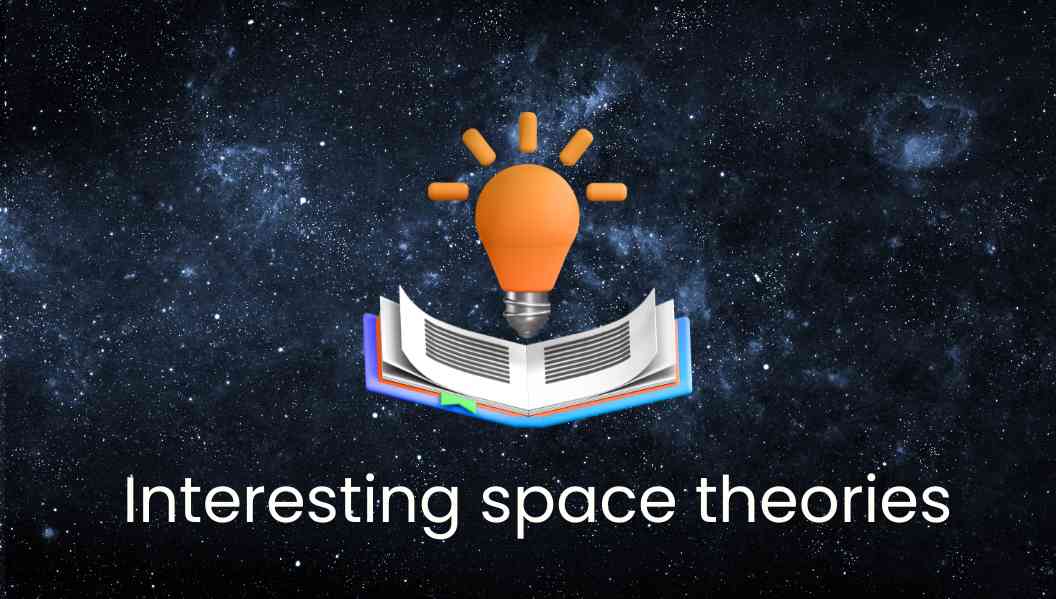Our space is mesmerizing and so beautiful. Its mysteriousness has made me wonder what is out there and how it is out there. Many scientists and theorists have come up with varying theories of their own. Many are unproven, but they all make sense because that is just how mysterious our universe is. In this blog, you will go through some interesting space theories.
The white hole theory.

White holes are the exact opposite of black hole, it is a hypothetical region of spacetime. This may be theoretical but it is a very fascinating fact. According to this theory, the white hole deflects sounds and information.
So, a black hole would pull everything towards it but, a white hole would push everything away from it. Now imagine what would happen if they would collide (that is if they can ever collide).
Andromeda Galaxy is the closest galaxy to Earth.

Andromeda Galaxy is the closest galaxy to ours and can be seen from our naked eye. It is dim when looking through our naked eye because it is 20.5 million light-years away, but that does not take away the magic from its existence.
We can only see it from afar, watching it glow. We cannot deny the possibility that there is another life form doing the same with our galaxy Milky Way.
The pocket universe theory.

There is still a lot to explore about our mysterious universe, however, scientists have discovered many possibilities and cool facts about the universe. Pocket dimension theory is also known as bubble universe. It is an interesting theory that talks about the endless possibilities out there. It talks about the realms out there that are similar to ours but, just in different inflationary zones, with access to alternate realities and unimaginable landscapes.
The coronal rain phenomenon.

As beautiful as the name sounds, this is an equally mesmerizing sight to behold. Shame it can only be seen using a very advanced and powerful telescope, Solar Dynamics Observatory (SDO).
The corneal rain looks like it’s raining in the sun. This happens when the sun spurts hot plasma and this plasma cools in its magnetic field and is again pulled back.
Venus is Earth’s twin separated.

Venus and Earth have been called ‘twins separated at birth’ because of how similar they are in mass, size, and composition. Now you may question how. One big reason why Venus is inhabitable is because its atmosphere is mainly greenhouse gas carbon dioxide.
This had heated the surface of Venus to the extent that an ordinary life would not be sustained in it. Now does the greenhouse gas carbon dioxide ring a bell? Yes, that is where we’ll be heading if we do not keep the greenhouse gas in check.
Our space is so mysterious and there are lots of interesting space theories but, that only opens more doors for more speculations and assumptions. And the funny thing is that we cannot even just dismiss them because of how bizarre the universe is and the ways it works.
You may also like:
Mind-blowing facts that sound unreal but are actually true
Most fascinating weird but true historical facts
Mind blowing facts about the human brain
FAQs
What is the White hole ?
In essence, white holes are black holes’ antithesis since they expel matter and light instead of retaining them.
Is Andromeda Galaxy closest to Earth?
The Andromeda galaxy is the nearest big spiral galaxy to our Milky Way, despite the fact that a number of smaller galaxies are closer.
What Andromeda looks like from Earth?
With a core visible as a somewhat brighter region, the galaxy appears as a bigger, elongated oval shape.
What did Stephen Hawking say about white holes?
Hawking said, “If there are objects called Black Holes, which things can fall into, but not get out, there ought to be other objects, that things can come out of but not fall into. One could call these White Holes.”
What is the meaning of coronal rain?
Many tiny plasma condensations that are directed by magnetic field lines and descend towards the solar surface make up coronal rain.
What is corona around sun?
The outermost region of the Sun’s atmosphere is called the corona. Usually, the intense light coming from the Sun’s surface obscures the corona.
Was Venus like Earth once?
Like Earth, it may have once been an inhabited ocean world, but that was at least a billion years ago. All surface water evaporated due to a runaway greenhouse effect, and the vapor slowly seeped into space. High pressure and temperatures batter the surface of volcanic rock today.
Did life exist in Venus?
It’s feasible that life as we know it may exist in the Venusian atmosphere, even if it’s highly unlikely given the hostile environment of the planet’s surface.
Are pocket universes possible?
Every Universe Might be a Pocket Universe, Including Our Own. In Donnie Darko, tangent universes are blessedly rare, but according to one cosmological model of reality, there might be an infinite number of them, including our own.













